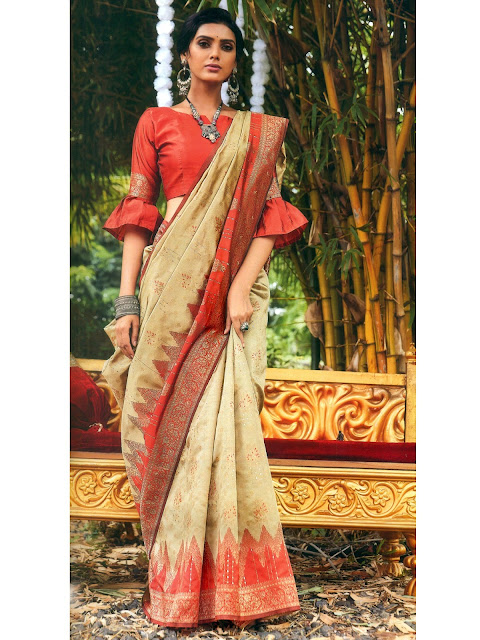Glasswork and Mirror Work Sarees: A Vibrant Tradition
Sarees adorned with glasswork or mirror work have become a fashion statement, captivating hearts with their mesmerizing beauty. Rajasthan, Gujarat, and Andhra Pradesh have emerged as the epicenters of this exquisite craft, each region contributing its unique touch to the creation of these stunning sarees. These states have also mastered the art of crafting a diverse range of artifacts, including purses, blouses, and decorative items, all embellished with the intricate beauty of mirror work.
Fabric Selection: A Delicate Balance
The versatility of glasswork sarees lies in their ability to be crafted from both cotton and silk fabrics. However, it's crucial to note that not all fabrics are suitable for this delicate craft. Extremely thin materials like cotton, georgette, or Kota cotton are not ideal for glasswork, as they lack the necessary strength to support the intricate designs.
Regional Specialties: A Tapestry of Techniques
Andhra Pradesh has emerged as a frontrunner in the world of glasswork sarees, showcasing its mastery in creating mirror work on the delicate muslin cloth, also known as Malmal cloth. The process involves a meticulous combination of dyeing, printing, and the precise placement of mirrors, following the intricate design. What sets Andhra Pradesh apart is its ability to create sarees with printed glasswork designs without any embroidery. This unique approach often features single-color printing, which still manages to captivate with its timeless elegance.
Rajasthan, on the other hand, has carved a niche for itself in creating glasswork sarees primarily on silk, cotton, or a blend of both. Although cotton fabric is not commonly used due to its thinness, which makes it unsuitable for mirror work, Rajasthani artisans have found innovative ways to overcome this challenge. They have mastered the art of working with silk-cotton mix cloth, allowing them to create stunning glasswork designs. To add an extra layer of sophistication, they often incorporate light embroidery, such as fine spray patterns near the border and anchal of the saree. While these sarees may not be the first choice of high society, their allure has won over many fashion enthusiasts.
Affordability and Pricing: A Delicate Balance
The cotton sarees from Rajasthan and Gujarat are surprisingly affordable, with prices ranging from Rs. 600 to Rs. 700. For those who purchase them near the source of production, it's possible to find even more competitive prices, sometimes as low as Rs. 400.
Silk sarees with glasswork, on the other hand, can be quite expensive. The silk fabric needs to be thick enough to support the weight of the mirror work, which increases the cost. Gujarat is particularly known for producing a large number of sarees with mirror work, often combining it with embroidery to create truly stunning pieces. Some artisans take it a step further by using very thick sarees, which can drive the price up to Rs. 4000 to Rs. 5000. There are two types of glasswork: one featuring small, mirror-like pieces and another with larger, more prominent glass pieces. The latter is often used on cotton sarees, which can support the weight of the glass, and is generally considered more attractive.
The Fashion Appeal: A Timeless Allure
Glasswork sarees have a unique charm that shines brightest on cotton fabrics. They add a beautiful decorative touch to the apparel without compromising on affordability. While they are currently in fashion mainly in metropolitan cities like Delhi, Kolkata, and Mumbai, they have become a staple among the younger generation. The addition of thread work around the glasswork designs makes them even more decorative and eye-catching. Despite being relatively affordable, ladies who wear these sarees are often admired for their fashion sense, as they have the ability to elevate any outfit with their timeless elegance.
.jpg)

Comments
Post a Comment